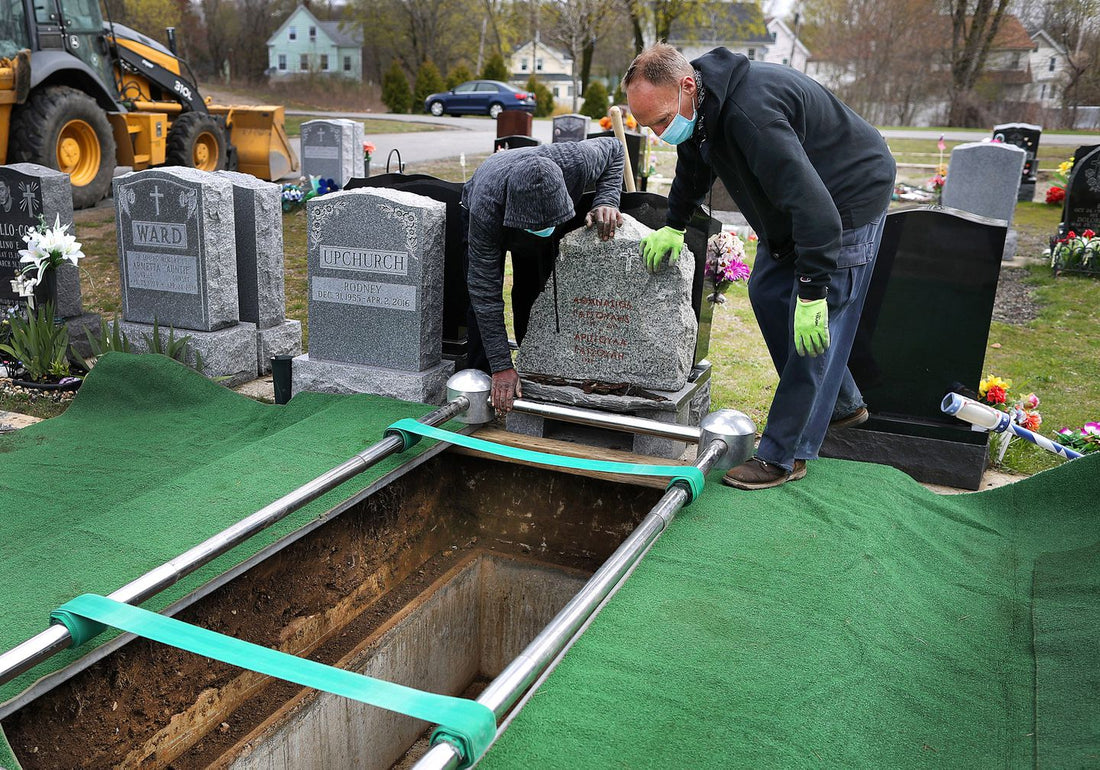Cemetery Worker Safety

Share
Cemetery Worker Safety: Ensuring a Safe Work Environment Year-Round
Cemetery workers operate year-round in diverse weather conditions, performing duties that include groundskeeping, excavating, equipment setup and movement, landscaping, and chemical management. Given the variable nature of these tasks and their potential hazards, it is crucial for cemetery workers to adopt safe work practices and receive training on job-specific risks such as field safety, ergonomics, and excavation.
Grave Digging Safety
Grave digging can involve manual labor or the use of excavating equipment. Prior to any digging, always confirm that the area is free of underground hazards such as pipes or utilities. Follow these key safety practices:
- Equipment Training and Inspection: Obtain proper training for the use and maintenance of excavating equipment. Always inspect tools and machinery before use to ensure they are in safe working condition.
- Manual Tools: Choose tools that are appropriately sized and weighted for the job. Using the wrong tool can result in injuries.
- Trenching and Excavation Standards: Comply with OSHA’s Trenching and Excavation Safety Requirements. For graves deeper than 5 feet, use shoring supports such as timber, metal struts, or hydraulic jacks to prevent collapses. Sloping the trench is another safety measure to consider.
- Marking Excavation Sites: After digging, clearly mark the grave area to prevent falls and accidents. Inspect shoring equipment regularly, as deteriorated materials can compromise safety.
Gravesite Safety
Setting up gravesites often involves moving chairs, furniture, pavilions, caskets, and casket-lowering devices. To ensure safety:
- Proper Lifting Techniques: Use good body mechanics and proper lifting techniques to minimize strain and injury.
- Mechanical Assistance: Where possible, utilize mechanical lifting equipment to transport and set up heavy materials at the gravesite.
Gravestone Safety
Gravestones made from marble, concrete, and other heavy materials pose unique hazards. To mitigate risks:
- Routine Inspections: Regularly inspect gravestones to ensure they are securely set and not at risk of toppling.
- Mechanical Lifting Devices: Use mechanical lifting equipment when moving stones. Always verify that the load and rigging are secure before lifting or transporting.
- Secure Placement: Ensure all gravestones are properly set and secured, whether stationary or in motion, to protect workers and visitors.
Cemetery Grounds Safety
Maintaining the grounds of a cemetery involves tasks such as lawn care, tree trimming, and grave site maintenance. Follow these safety tips:
- Lawn Equipment Maintenance: Inspect and maintain lawn care tools and equipment according to the manufacturer’s guidelines. Use appropriate personal protective equipment (PPE) such as steel-toed boots and sturdy gloves.
- Chemical Safety: When handling fertilizers and pesticides, wear chemical-resistant gloves, safety goggles, impermeable coveralls, and respiratory protection. Follow proper storage and application procedures.
- Weather Precautions: Protect yourself from sun exposure, heat stress, and cold stress by dressing appropriately, staying hydrated, and taking regular breaks.
- Hazardous Pests: Be aware of local pests such as wasps, bees, and snakes. Learn first aid for bites and stings and know how to respond appropriately.
- Preventing Slips, Trips, and Falls: Navigate the cemetery grounds cautiously to avoid uneven terrain. Never walk over graves or concrete slabs to prevent accidents from cave-ins or slips.
About Certified Safety Training for Cemeteries
Certified Safety Training (CST) is the leader in cemetery OSHA compliance. Backed by more than 30 years of industry experience and Certified Safety Professionals, CST matches industry expertise with customizable, award-winning programming to make sure that customers have the highest-quality safety programs, plans, training, and advice.
Hear What Our Customers Have to Say
